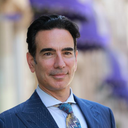Thank you for your question 19103. I understand your concern. Botox is a purified protein used to address wrinkles associated with facial expression. When injected into the skin Botox will relax the muscles and smoothen out the overlying wrinkles. The most common areas of treatment are in the upper face. These include the horizontal lines seen on the upper forehead when one raises the brows, the vertical lines seen between the brows when one frowns (frown lines), and the crow's feet seen around the eyes when one smiles.It is difficult to make an assessment without a formal exam where the entire medical history is reviewed. However, I hope the information provided here is useful.One of the most common questions regarding Botox is whether the treatment is painful. We use a painless technique to maximize our patients comfort during the treatment. This starts by reconstituting the product with preserved saline, which contains benzyl alcohol, to decrease the discomfort with the injection. We use a tiny needle, similar to the size of the needle used for TB test on the forearm. During the treatment, we provide a relaxing environment by playing a calming video with gentle music. We provide stress balls to our patients to hold during their treatment. We apply cold air on the area which serves to numb the skin. We also use the Beauty Bar, which is a vibration device which distracts the patient from the injection itself. Finally, with experience, I have developed a technique to inject to minimize pain. This includes pinching the area, pushing the skin into the needle (as opposed to pushing the needle into the skin), using a slight rotation, and using gentle pressure. Most patients are surprised at how comfortable the treatment is.If I had a patient with the concern described here I would say that everyone is different in terms of sensitivity to discomfort and she may want to look for a doctor who uses techniques described above to provide comfort during the treatment.With any injection, there are risks such as pain, bleeding, bruising, redness, swelling, tenderness, and infection. We take special precautions to minimize these risks such as using a painless technique. We also treat bruises with a laser as early as the next day. Bruises usually resolve within two weeks if untreated. After a laser treatment bruises usually resolve in 1-3 days, but may still take two weeks for full resolution. In addition to these risks, with Botox there is also a risk that the product spreads or diffuses to nearby structures. Spread to nearby muscles can lead to side effects such as the temporary appearance of droopy eyelids or a temporary asymmetric smile.





